With so many free options for artists to create and sell products featuring their designs, it’s a no-brainer to give it a try.
As a painter I am accustomed to seeing my artwork hanging on a wall. While this has kept me inspired all of these years, recently I have been interested in how my paintings can inhabit interior spaces in more dynamic ways. I want to breathe new life into my paintings so I can watch them transform into functional objects that can grace a sofa or a dining table.
It excites me that the price of functional art makes it available to a larger audience, and hence my research into Print on Demand (POD) services began. I’d like to share what I’ve learned so far about various POD services because it truly takes a lot of time and experimentation to figure out which company is the best for you. If you are keen on turning your art into products, then keep reading!
To begin, I don’t receive anything for recommending any of these platforms. I want to share what I learned to save you the trouble of doing the research yourself, and also because the holiday season is a great time for artists to sell their work and make unique presents for family and friends.
Overview
POD companies print your digital images onto various surfaces/products (canvas, mugs, cotton, etc.). Many of them will ship these unique items from their warehouse to your customer, so you never have to deal with packaging, shipping, etc.
Once you upload an image of your artwork onto these platforms, you can see it on a variety of products such as blankets, pillows, and clothing. Below I explain the similarities and differences between three popular companies, and tell you about which company I chose, and why. I will also discuss ideal file image sizes, and the best ways to get digital images of your work.
You have probably come across Society 6 before. They do a fabulous job with SEO optimization, and have popped up first for me on many a search for duvet covers and other items for the home. Unlike the other POD companies I will discuss below, they are printers AND host the platform for you to sell, so all you have to do is upload your artwork and they do the rest.
What I like about Society 6 is that they make it easy for you to upload your artwork onto many different products, such as blankets, floor mats, shirts, and so on. I especially enjoyed seeing my paintings on wall clocks and side tables! Their products range in price, and they also sell artist prints. And Society 6 takes care of the printing, payment collection and shipping, so all you have to do is upload your artwork and your products will be out in the world and listed on their site!
While the site is easy to use and they have a huge reach, a big drawback for me with Society 6 is the low commission for artists at 10% of the sale price. Artists can adjust prices of artist prints, so that is a bit reassuring, but you can’t adjust the prices of the functional objects, and the commission is so low that you would have to sell a lot of products to get a meaningful profit from the venture.
For now I will keep my artwork on Society 6 because I have nothing to lose and the platform does make my work visible to people all around the world. However, I don’t think I will put a lot more energy into this platform.
The next two POD companies I tried were Printful and Printify. Unlike Society 6, you can’t sell directly from these platforms, but you can connect the products you make to selling platforms such as Etsy and Shopify. Printful and Printify will automate all processes that are involved in your orders: processing, fulfillment, and delivery. They also have beautiful mock-up photos that you can choose to put your product in, which allows your potential customers to see the items in a context.
All you have to do is upload your artworks and set prices, connect with Etsy or some other selling platform, and these companies will pretty much do the rest. Do keep in mind that you can’t just set up an Etsy shop or Shopify store and call it a day. My experiment with Etsy resulted in sales last year only after I promoted my page to my social networks. When I stopped promoting, the sales stopped. If you want to sell with Etsy or Shopify, you have to nurture your store and promote your heart out, so just keep that in mind.
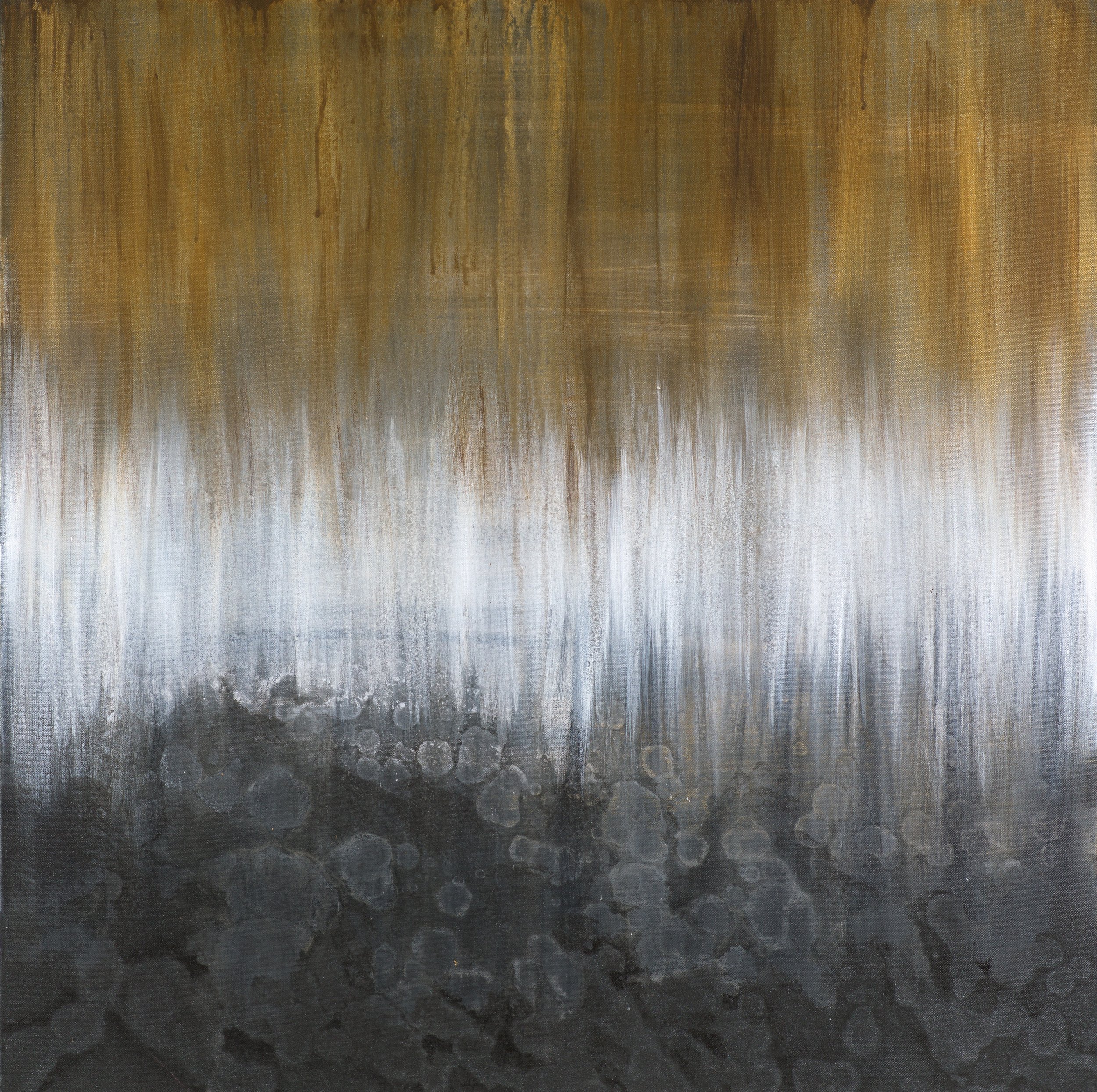
My Original Painting. Iron Oxide III. 36” x 36”
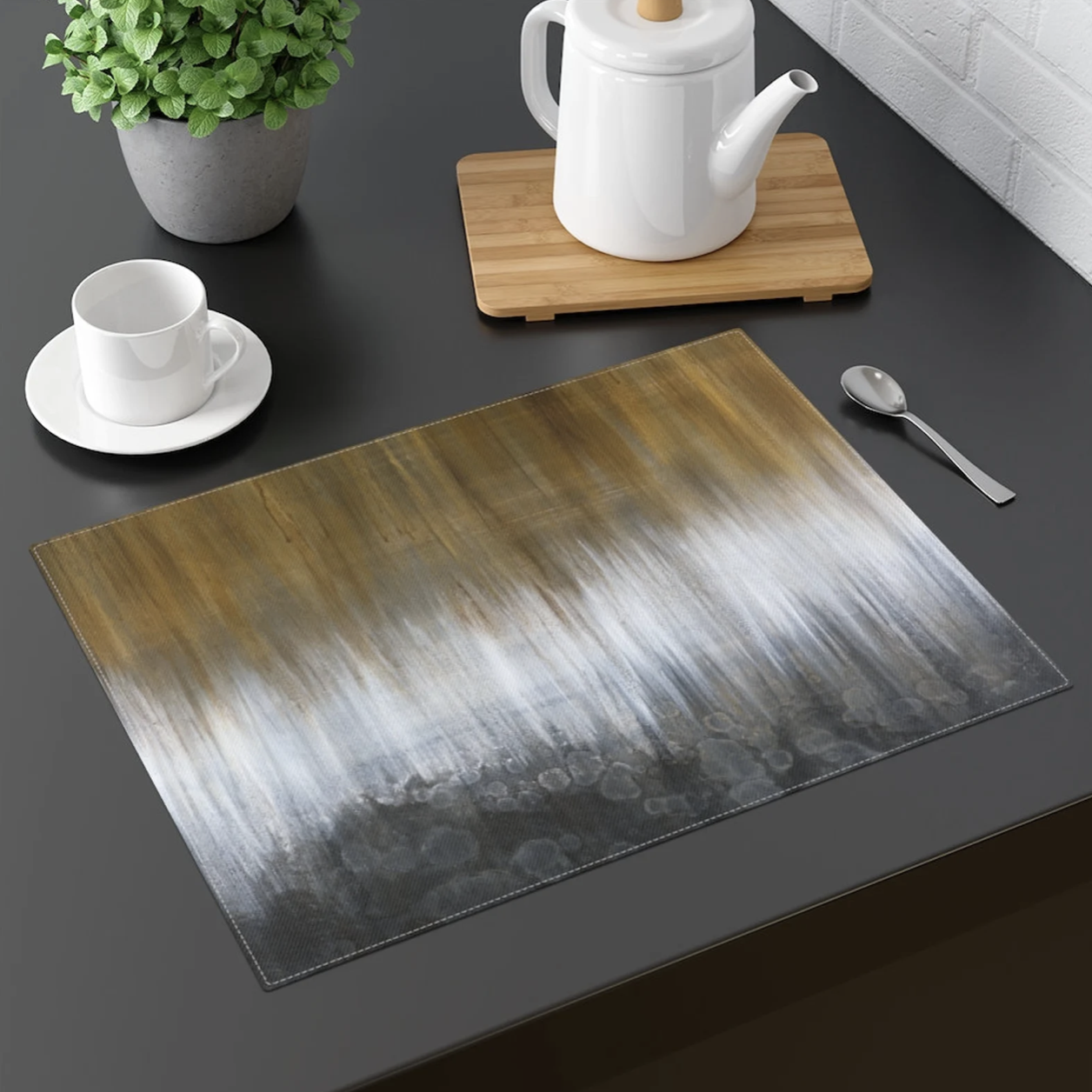
My painting Iron Oxide printed on a Placemat using Printify’s software.
Printify
Printify has a wide selection of products from which artists can choose, but they don’t have all the furniture options that Society 6 has. Printify’s products are reasonably priced, and an artist could mark-up the item by 30-40% without having to charge customers too much. Once you connect Printify to a sales platform such as Etsy or Shopify, Printify will “push” your products to those online stores and take care of the rest. I found it quite easy to connect my Etsy shop with Printify, so overall I think this is a solid choice.
The only thing I don’t like about Printify is they don’t offer discounts on ordering samples, which makes it cost-prohibitive for you to try to get a sense of the quality of the products you create.
Printful
Printful is another popular POD company, and is very similar to Printify. I find their product design software the best out of the three because it gives you 3-d views and allows for easy image manipulation. However, their items are more expensive than Printify, so I would have to charge more for my products, which is not ideal. Also, they focus more on tee shirts and clothing in general, so their product choices are a bit limited. They make it convenient for you to order samples, as you can order 3 products once per month at 20% off. Beyond that you would pay full price for the item.
Just like Printify, you can connect Printful to another selling platform like Shopify, but the higher cost and limited choice of products ultimately led me to choose Printify as the company to use. However, if you are mostly interested in putting your designs on clothing, then I think this would be a great company to use.
Check out Printful
Image Size
Now that you have more information about these companies, let’s talk about the size of your images.
Your images should be in .jpeg or .png format for most of these sites. You will need an image that is at least 150 dpi in order to get it printed on products. The file size should mirror the actual size of the object being printed, so if you are printing on a 18” x 18” pillow, then your original file size should be 18” x 18”
at 150 dpi or more. Upsizing doesn’t usually yield better results, so if your file isn’t big enough, choose a smaller product.
To meet these file sizes, you will need a high-resolution camera (such as an Single Lens Reflex) to photograph your artworks. You can also bring your pieces to a photographer who specializes in shooting artwork, and they are usually able to give you 100mb files or larger, which is plenty big to print your pieces on large items like blankets and duvet covers.
I would not use a phone to photograph your pieces for printing because the images will be too small. In my case, many of the images I used were ones I created digitally on Photoshop, but the rest were large images I shot myself with my Nikon D70, or by the local photographer.
It was only $25 for me to get each piece photographed, and the final image is much bigger and better quality than what I could get on my Nikon, so in the future I will reserve my best pieces for the professional photographer.
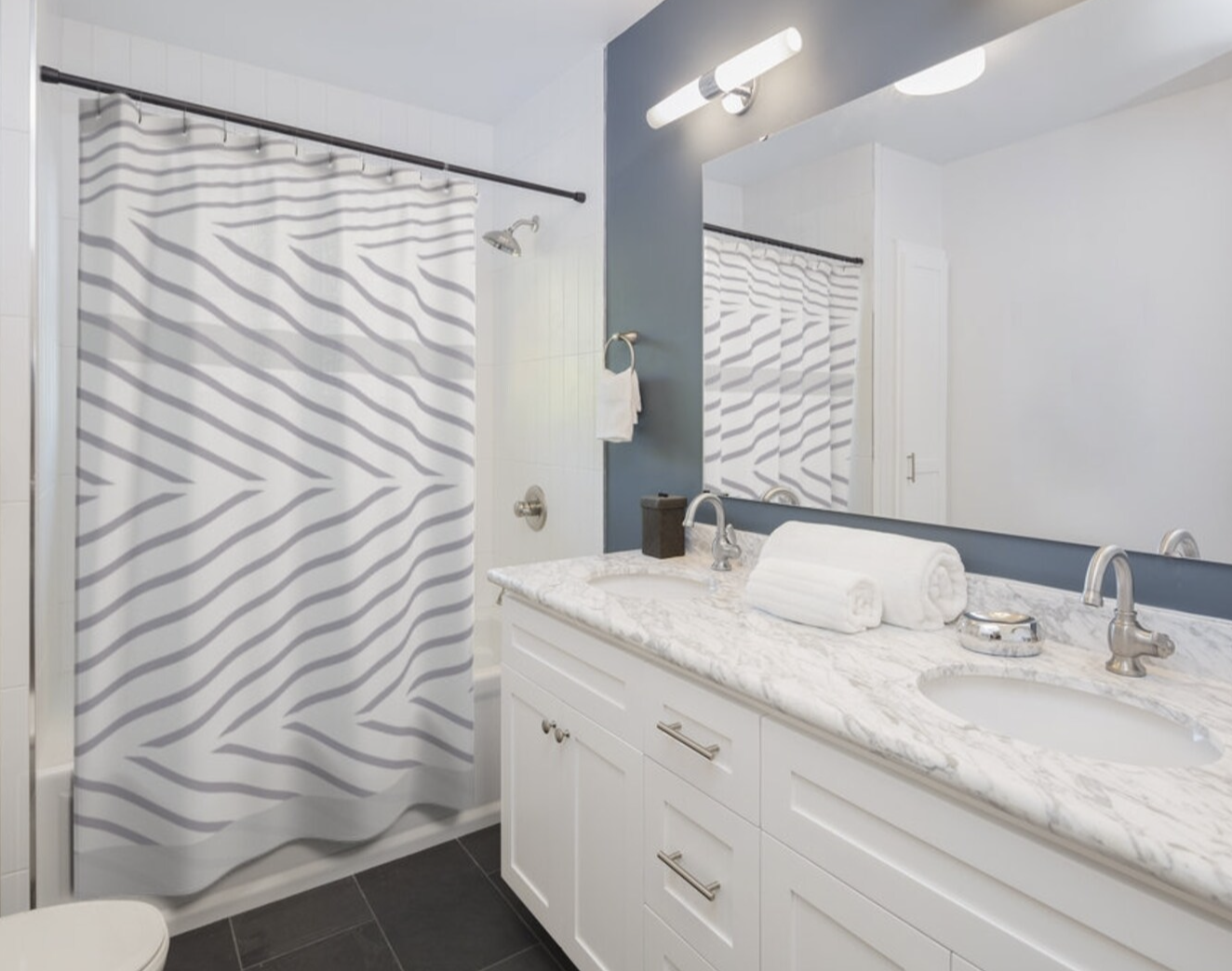
My Chevron Fog design on a Shower Curtain using Printify’s software.
Digital Art
Besides uploading paintings that you have already created, you can also consider making digital art for your products as it gives you the most control on image size and dimensions. I have been teaching Digital Art for the last two years, and what I have found is that Photoshop is the best program to create high-resolution digital art.
You can use free programs online to create digital art, but many of them won’t let you save the image in the needed file formats, and the images are too small. Photoshop only costs $10 per month if you bundle it with the photo program Lightroom.
Conclusion
I sincerely hope this information is useful to you. If something doesn’t make sense or you need more information, please reach out. Also, feel free to comment or ask questions. If you end up making a shop, please send it to me—would love to see if this inspires anyone else to give their art “snuggle appeal.”
ABOUT ANDREA CERMANSKI
I am an artist out of Santa Fe, New Mexico who has been painting for almost 30 years. I love to teach first-timers as well as experienced painters who need a creative reboot. My work has been displayed in several galleries around the country, and I have a Bachelor’s in Art History, a Master’s in Art Education, and had my work in a show juried by Judy Chicago. The idea of getting more people painting makes me light up as I want to inspire more people to express their creative selves and tap into a place of joy and calm.
WANT TO LEARN MORE?
- Subscribe and get one of the FREEBIES below!
-
PDF explaining How to Use My 5 Favorite Mediums
-
Take the Quiz: What Abstract Artist are you Destined to Be?
-
8 Colors Every Artist Should Have: My list of BEST colors to buy and pro mixing tips
-
-
Check out My Online Abstract Painting Course
-
Read More Painting Tips Blog Posts
-
Check out My Paintings & Art Prints for Sale
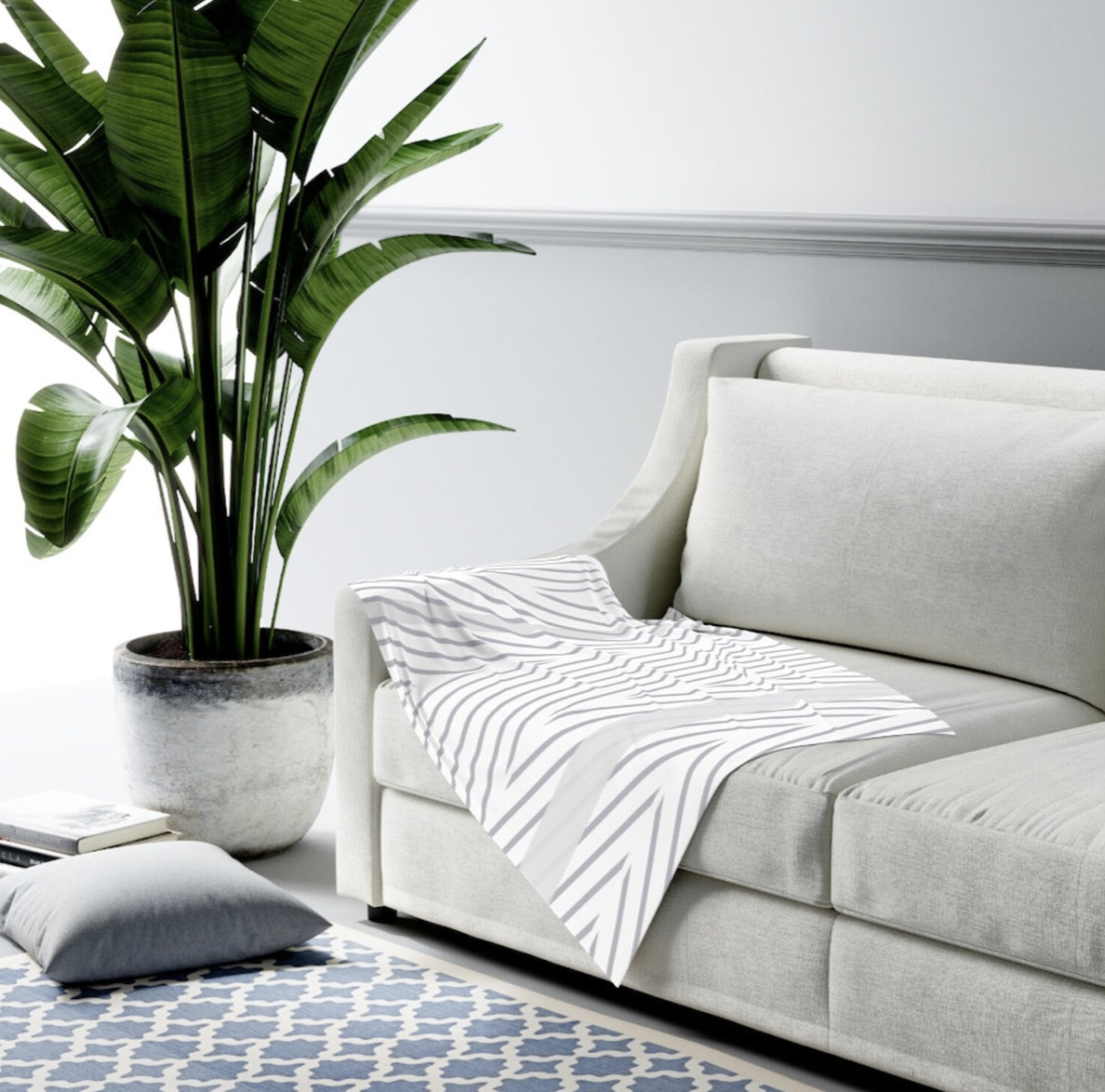
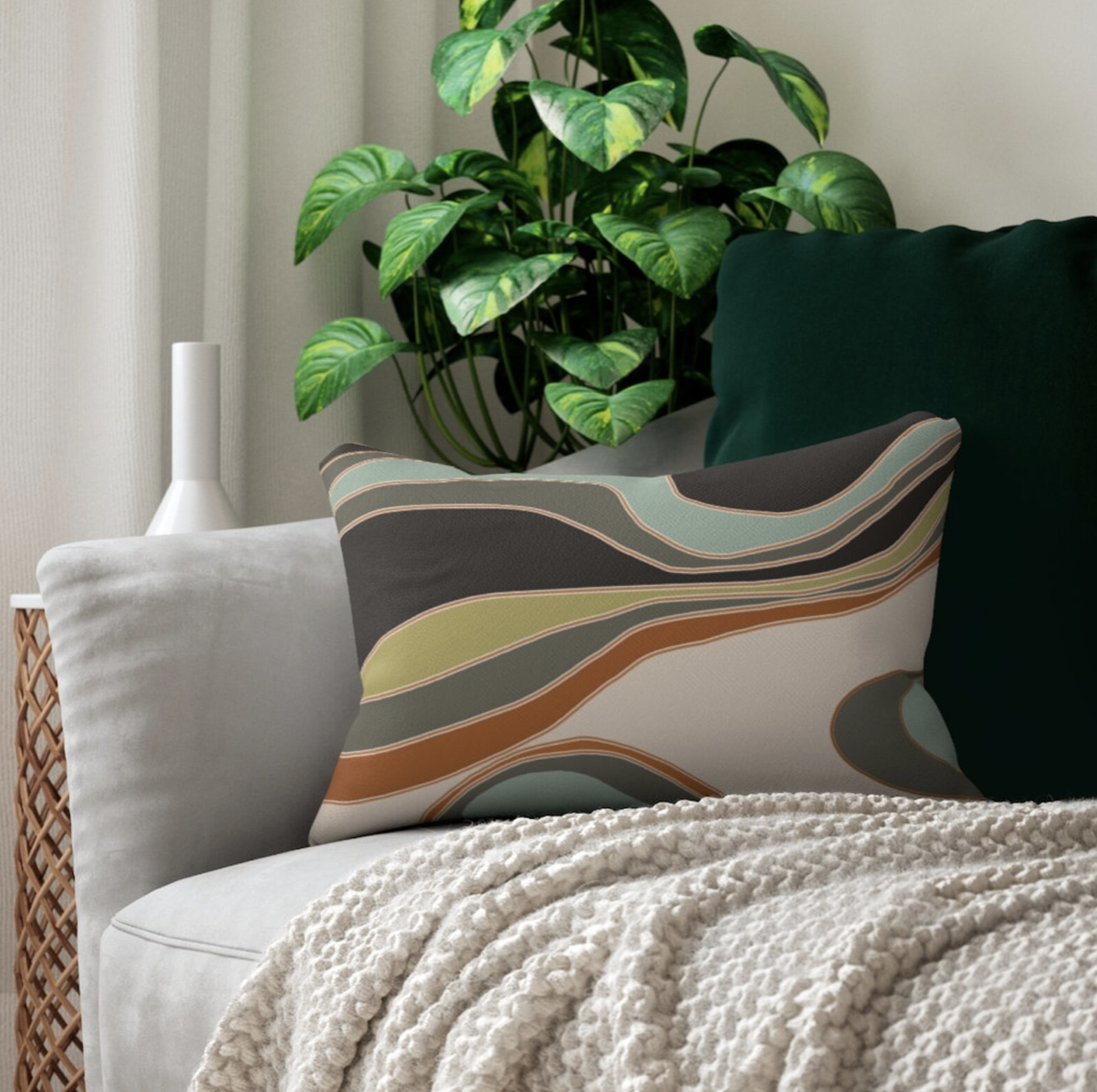
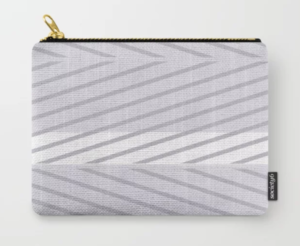
Helpful – thank you & best w your work!!!
Thanks, and I am glad it was helpful!